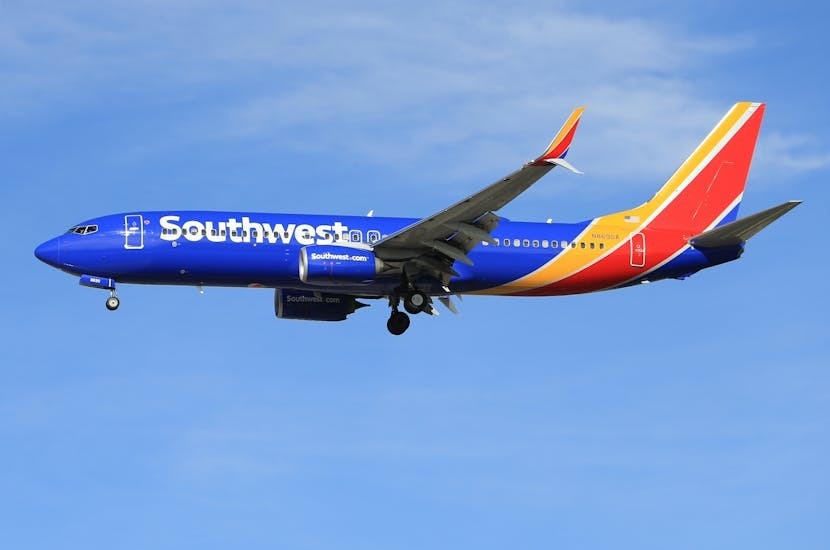Home » AIRLINE NEWS » Southwest Airlines Hit by Unexpected Internet Connectivity Issue, Triggering Nationwide Flight Delays and Backlog of Departures: New Update You Need to know
Saturday, August 2, 2025
Southwest Airlines suffered huge operational outages on Thursday after its systems broke down in the wake of an unexpected internet connectivity problem. The technical glitch meant the airline had to temporarily suspend all departing flights, resulting in long delays and a backlog of departures nationwide. The episode is an example of the airline industry’s increasing reliance on digital infrastructure, and how even small systems issues can lead to large effects in air travel.
Flight Operations Halted Due to System Failure The disruption started early in the day when an unexpected internet connectivity issue caused Southwest Airlines’ critical systems, which manage flights and operations, to go offline. Without access to these systems, the airline was unable to process outbound flights, prompting an immediate suspension of all departures until the issue was resolved.
The timing of the outage caught many passengers off guard, with some already on board when the system failure occurred. As a result, airports nationwide experienced delays, and all scheduled departures were temporarily paused while Southwest worked to fix the problem.
Passenger Confusion and Communication Breakdown
As Southwest Airlines worked to address the technical issue, passengers were left in a state of confusion. Despite updates being posted on departure boards showing both the original and new departure times, flights were not officially listed as delayed. This lack of clear information left many travelers unsure whether their flights would depart as scheduled or face further delays.
For those already on board, the lack of timely updates made matters worse. Passengers waiting for takeoff found themselves uncertain about when or if their flight would leave. Meanwhile, those still in terminals faced mounting anxiety, as they were left without clear answers regarding the status of their flights.
Wide-Ranging Delays and Domino Effect
As the situation unfolded, it became apparent that the outage had a significant and far-reaching impact. Around 40% of Southwest Airlines flights experienced delays due to the system breakdown, with delays ranging from a few hours to several, depending on the location and flight. The disruption extended beyond just delayed departures, setting off a domino effect throughout the airline’s entire network. Delayed arriving flights led to additional delays for departing flights.
The delays in incoming flights created a shortage of available aircraft and crews, leading to further complications in getting flights back on track. This domino effect resulted in a backlog of delayed flights, which affected airports nationwide. As the delays stretched on, terminals became overcrowded with frustrated passengers trying to find out when their flights would finally depart.
Keeping Travelers Informed During the Disruption
With Southwest Airlines working hard to restore its systems, passengers were urged to stay informed about their flight statuses. Travelers were advised to use the airline’s website, mobile app, or customer service lines to receive real-time updates about their flights. Southwest Airlines apologized for the disruption and reassured passengers that efforts were underway to resolve the issue as quickly as possible.
Even with these assurances, the airline cautioned that delays and cancellations might persist throughout the day. Passengers were encouraged to remain flexible, allow extra time at the airport, and check flight statuses frequently to stay on top of any developments.
The Growing Dependence on Technology in Aviation
Thursday’s incident highlights the critical role that technology plays in modern airline operations. From scheduling flights to managing crew assignments, nearly every aspect of the airline’s operations relies on interconnected digital systems. When these systems experience failures, as in the case of Southwest Airlines, the results can be severe, affecting not just the airline involved but also passengers who may face significant delays and cancellations.
The event also sheds light on the interconnected nature of modern air travel systems. A technical issue in one area can quickly escalate, affecting multiple parts of the network and leading to widespread disruptions. While these digital systems are designed to increase efficiency, their failure can have a cascading impact, leaving passengers stranded and airlines scrambling to restore normal service.
The Importance of Backup Systems and Contingency Plans
This outage serves as a stark reminder of the need for robust backup systems within the airline industry. As airlines continue to rely on technology for day-to-day operations, it is crucial that they invest in contingency plans to ensure that they can continue functioning in the event of system failures. These plans should include redundant systems for managing critical operations and protocols for communicating with passengers when disruptions occur.
The situation with Southwest Airlines emphasizes the necessity for the aviation sector to review its infrastructure and strengthen preparedness for unforeseen technological challenges. While airlines are increasingly relying on digital solutions to streamline operations, they must also ensure that their systems are resilient enough to handle failures without causing widespread disruptions.
Conclusion
The technical failure at Southwest Airlines on Thursday served as a powerful reminder of how quickly technology can disrupt air travel. With nearly 40% of flights delayed and a ripple effect causing widespread problems, passengers were left stranded and uncertain about their travel plans. As Southwest addressed the problem, the incident highlighted the critical importance of having backup systems in place to reduce the impact of future disruptions.
The incident also highlighted the growing reliance of the airline industry on digital infrastructure and the risks associated with such dependence. For travelers, it’s essential to remain flexible and stay informed during disruptions. As the industry continues to evolve, it will need to focus on developing more resilient systems to ensure operations can continue smoothly, even when technology fails.

